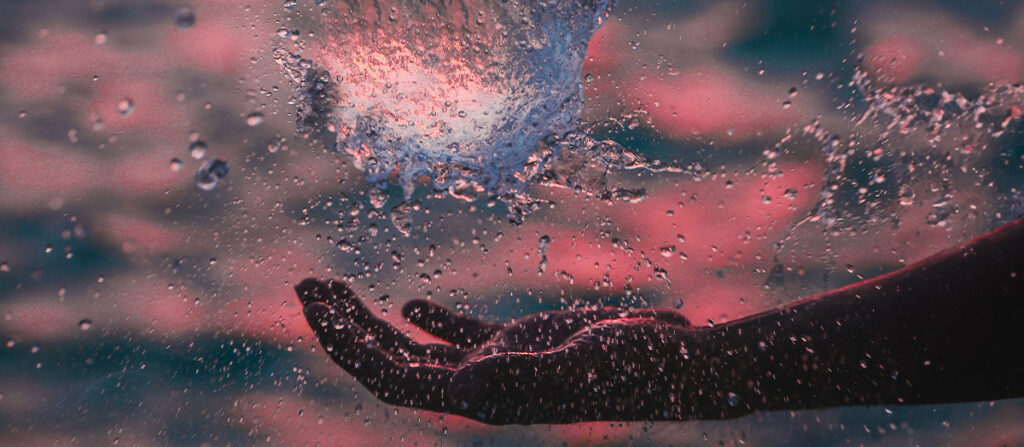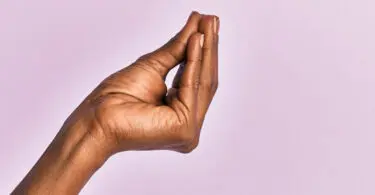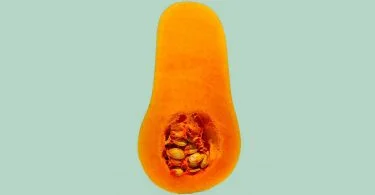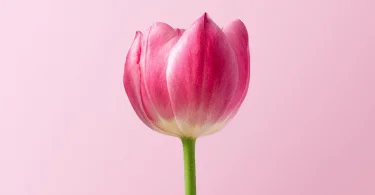Welcome to Beducated’s complete guide to squirting! We’ll cover everything from what squirting even is, how to make yourself squirt, and how to make a woman squirt.
Ah, yes. The mysterious yet invigorating act of squirting. Porn glamorizes it, experts are baffled by it, and countless people doubt it’s even real (spoiler alert, it is very real).
Alas, the day has come to put an end to this madness!
Make sure to check out Beducated's Online Courses on Pleasing a Vulva

So, let’s dive right in, shall we?
Language Disclaimer: Not everyone with a vulva identifies as “woman” or “female.” We want to address and include everyone with a vulva, even though our author sometimes uses words such as “woman” or “female” for the sake of better readability. 🏳️⚧️ 🏳️🌈
What is Squirting?
Picture this: in the throes of a steamy encounter, you suddenly release a clear, gushing fluid from your urethra. That’s exactly what squirting is!
Just like orgasms or female ejaculation, it’s a fabulous physical response to toe-curling sexual pleasure.
Lola Jean, the renowned sex educator behind Beducated’s Squirting course, colorfully describes it as a “sexual applause.” And isn’t that just the perfect way to put it? It’s a burst of satisfaction and ecstasy that’s as thrilling as a standing ovation at a Broadway show.
Some practitioners and interpretations of Tantra—a spiritual tradition that originated in ancient India—see squirting as a sacred form of sexual expression. Tantra is all about tapping into your sexual energy to boost your spiritual growth. It’s like going on a fun adventure where you explore every aspect of your sexuality.
One of these exciting discoveries could be squirting. In the world of Tantra, squirting can help make your intimate moments even more special, promote healing, and strengthen your spiritual bond.
Is Squirting Pee?
So, you’re probably wondering, ‘Is squirt just pee?’ Well, the answer is… sort of. But, as with many things relevant to female biology, the full story is a bit more complex.
It might seem like the question has been battering humanity since the dawn of civilization. Yet surprisingly, research on squirting is scarce.
One 2015 study concluded that squirting was essentially an involuntary release of urine mixed with ejaculate during sex.
For the study, researchers analyzed both the urine and the liquid expelled during squirting from seven women. They found that in addition to substances found in urine, squirt contained a protein typically associated with male ejaculation; Prostate-Specific Antigen (PSA).
For those of us who aren’t biochemists and have zero idea what PSA is, all you need to know is that it’s a protein that nourishes and transports sperm. According to the researchers, this suggests that the fluid contains some secretions from the Skene’s glands—also known as the female prostate.

So, is squirting pee after all? Well, if you’re just asking if the substance is pee, then yeah, it technically is pee mixed with cum. But whether the act of squirting is the same as peeing is a whole different story.
Peeing is just the act of emptying our bladder. And though it might have a place in sex for some folks, unlike squirting, it isn’t a physical manifestation of pleasure. As Lola Jean puts it, squirting is something the body does when it feels really good.
So if you ask us, squirting might be pee, but it isn’t peeing.
Squirting vs. Orgasm: Are They the Same?
So, if it’s an expression of sexual pleasure—or a “sexual applause,” as Lola Jean puts it—is squirting the same as an orgasm? Wrong! Squirting and orgasms are distinct phenomena. It can occur before, during, or after an orgasm.
“Squirting, most of the time, isn’t an orgasm, and it’s a lot easier to achieve than doing so,” Lola explains in her course. She emphasizes that not everyone can squirt, and that’s perfectly okay. Everyone’s body is different, and these differences should be celebrated, not stigmatized.
But female ejaculation and squirting must be the same–right?! Wrong! The liquid expelled during orgasms (ejaculate) differs from the liquid expelled during squirting.
What Does Squirting Feel Like?
Squirting is a physical manifestation of sexual pleasure, so it isn’t too wild of a conclusion to say that the person experiencing it is probably having a good time.
That being said, squirting isn’t always obvious.
“There have been some experiences where I’ve squirted where I almost didn’t realize it was happening, and it was like really big orgasms,” Lola Jean shares.
It also feels different to female ejaculation. Many people describe squirting as a sensation similar to peeing, just much more pleasurable. In fact, the key to squirting is to give in to that peeing sensation and fight the instinct to pull inwards!
It’s important to remember that squirting doesn’t always look the same for everyone. Contrary to what is often portrayed in porn, squirts can trickle, dribble, eject, fall out of your body, or gush. All of it counts. All of it is squirt.

How to Squirt: 6 Simple Steps
Now that we’ve got all the formalities out of the way, we bet you’re just eager to learn how to make yourself squirt. Spoiler alert: there isn’t a surefire recipe that will work every time. Learning how to squirt takes a lot of trial and error.
Moreover, not everyone can squirt. So if you find yourself trying everything in this guide and still not getting there, there’s no shame in accepting that squirting isn’t your body’s jam.
Nevertheless, there are some things you can try that could help you on your journey to squirting. Read on to get Beducated’s six expert tips on how to squirt:
1. Prepare Your Space
Before diving into the deep end, you’ll need to get your ducks in a row. Squirting can be messy, so a little preparation goes a long way in ensuring everyone has a great time.
Make sure to check out Beducated's Online Courses on Pleasing a Vulva

Use towels, water-resistant throws, or absorbent pads to protect your bed or floor. If you’re feeling adventurous, why not take the party to the bathtub or shower?
Finally, maintaining a safe and comfortable space is paramount to a positive experience. If you’re with a partner, communicate your expectations, boundaries, and preferences before getting to business.
2. Hydrate, Hydrate, Hydrate!
Just like a well-oiled machine, your body needs hydration to function optimally—and that’s true for sex, too. Staying hydrated not only facilitates squirting but also enhances overall sexual functioning.
Remember, dehydration can lead to difficulty achieving orgasm and low energy for sex. So, keep that water bottle handy!
3. Relaaaaax
It’s hard to enjoy the ride if you feel on edge or uncomfortable. So make sure everyone is nice and relaxed before the action starts.
Creating a safe and comfortable space lets you fully let go during the experience. Techniques like deep breathing, meditation, and sensual massages can help you relax and set the mood.
Piece of advice: If the thought of some urine in squirt makes you squeamish, squirting might not be right for you. Accepting that it might not be your cup of tea is okay. After all, you should be chasing things that bring you pleasure!
4. It’s Arousal Time, Baby
When it comes to squirting, being sexually aroused is by far the most important piece of the puzzle.
Biologically speaking, sexual arousal leads to the engorgement of the pelvic floor and the internal clitoris—a natural process that sets up the stage for squirting. In other words: don’t sleep on the foreplay!
Many vulva owners require clitoral stimulation to feel pleasure or reach an orgasm, so starting with clitoral stimulation is a good idea.
Remember to start slow with vulva foreplay, as that region can be incredibly sensitive. You can gradually pick up the pressure and pace after warming up, but be gentle!
5. Show the G-spot Some Love
Speaking of foreplay, don’t forget to invite the G-Spot to the party! Lather your finger or curved vibrator in some lube and use that to add pressure to the G-Spot gently.
Wondering what the correlation between G-Spot stimulation and squirting is? Lola Jean boils it down to its location.
Sitting just at the edge of the vaginal wall towards the crux of the clitoris, the G-Spot offers a unique angle for internal clitoral stimulation. You’ll also find the Skene’s glands there––that’s erectile tissue that surrounds the urethra.
“So we’re getting clitoris, and we’re getting erectile tissue,” says Jean. “It’s gonna feel pretty good.”
If you’re unsure where the G-Spot is located or want more juicy tips on G-Spot stimulation, check out the G-Spot Bliss course on Beducated.
6. Now Push!
Here comes the tricky part: now that you’ve built up all that pressure, you’ll need to push it out.
The pressure will create a sensation that feels like needing to pee. While your instinct might be to pull inwards, the key here is to do the opposite and push outwards.
Be open to things getting a little messy. It’s essential just to let go and give in to the moment. After all, the journey to pleasure is all about embracing the ride!

How to Make a Woman Squirt
So, we’ve established that squirting can feel fantastic, and it’s no surprise you’re keen to learn how to make a woman squirt.
But remember, while there are many things you can do to help your partner squirt, there’s no one-size-fits-all “squirting recipe.”
Sex, pleasure, and orgasms are as unique as those experiencing them. The key to making her squirt is to focus on what she wants and how she reacts to different sensations.
As mentioned earlier, not everyone can squirt, and that’s perfectly okay. If your partner can’t squirt, it’s important not to make them feel inadequate or like they are “disappointing” you.
With that covered, it’s time to dive into Beducated’s three expert tips on how to make a woman squirt!
#1 Don’t Skimp on the Foreplay
The secret to how to make a woman squirt is to spoil her with a long, hot, decadent session of foreplay that’ll get her sexually aroused.
As discussed in the step-by-step guide above, sexual arousal is essential for squirting. That’s why foreplay is super important!
But it’s not just about the act of foreplay itself; it’s about taking your time. Slow down and let her indulge in the experience. Remember, both clitoral and G-spot stimulation are essential here–just as is the case with female ejaculation, too.
#2 Sex Toys Are Your Friends
Many people feel intimidated by the idea of incorporating sex toys into partnered sex—and wrongfully so!
Toys like dildos and vibrators can make a huge difference when achieving squirting. They can provide consistent and targeted sexual stimulation that might be difficult to achieve with hands or other body parts alone.
So, don’t shy away from bringing some extra fun into the bedroom!
#3 Sex Positions for Squirting
Now, let’s talk about sex positions. If you’re wondering how to make a woman squirt during sex, you need to understand that nailing the perfect angle is key.
Certain sex positions, like the Plow, Doggy Style, and Cowgirl, can provide firm and constant G-spot stimulation, which is essential for making her squirt.
Each position allows for deep penetration and the right angle to hit the G-spot just right. But remember, everybody is different, so a little experimentation can go a long way to help you find out what works best for you and your partner.
The journey to pleasure is all about exploration and enjoyment, so let the good times roll.
Bonus Tip: Train Your Pelvic Floor To Squirt
Let’s talk about the unsung hero of squirting: the pelvic floor muscles. We’ve already covered how pivotal movement is when squirting; when it feels like you’re about to pee, you need to use your pelvic floor to push outwards.
That’s why having control over your pelvic muscles can make the difference between a near-miss and a bullseye in the squirting game.
So the next question is, how do you train your pelvic muscles to be strong? Let’s dive in!
The Power of Pelvic Control
Control of the pelvic muscles is essential when attempting to squirt. Think of these muscles as the gatekeepers of the squirt.
They can either hold back or let loose the floodgates of pleasure. So, how do we gain control over these elusive muscles? Training, my friend, training.
Kegels and Reverse Kegels
Kegels and Reverse Kegels are exercises that can help strengthen the pelvic floor muscles.
Imagine trying to stop the flow of urine mid-stream. That’s a Kegel. Now, imagine trying to push the urine out faster. That’s a reverse Kegel.
These exercises can be done anytime, anywhere. Just remember, like any workout, consistency is key.
Pelvic Floor Trainers and Ben Wa Balls
If you’re looking to take your training to the next level, pelvic floor trainers, yoni eggs, or Ben Wa balls can provide additional support during training.
These devices are designed to be inserted into the vagina, and they provide resistance for your muscles to work against. It’s like weightlifting for your vagina!
Remember, the journey to squirting is a personal one, and it’s all about exploring and understanding your own body. So, take your time, be patient with yourself, and most importantly, enjoy the ride!
Watch Squirting in Action

Learn how to squirt or how to make a woman squirt by watching a live demonstration packed with expert advice and easy-to-follow instructions!
Check out the Squirting in Action course on Beducated today with a FREE trial.
Make sure to check out Beducated's Online Courses on Pleasing a Vulva





